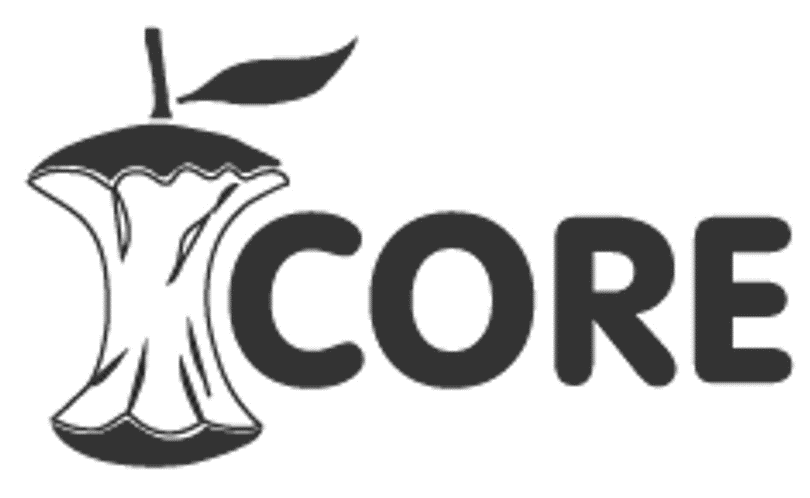Correlation Analysis of Battery Capacity, Range, and Charging Time in Electric Vehicles Using Pearson Correlation and MATLAB Regression
Abstract
Keywords
References
International Energy Agency (IEA), “Global EV outlook 2021,” Global EV Outlook 2021, p. 101, 2021, [Online]. Available: https://iea.blob.core.windows.net/assets/ed5f4484-f556-4110-8c5c-4ede8bcba637/GlobalEVOutlook2021.pdf
T. Gül, A. F. Pales, and E. Connelly, “Global EV outlook 2024 moving towards increased affordability,” Electric Vehicles Intitiative , p. 79, 2024, [Online]. Available: www.iea.org
F. Alanazi, “Electric vehicles: Benefits challenges and potential solutions,” Journal of Applied Scienc, vol. 13, pp. 1–23, 2023, doi: 10.3390/app13106016
AC Ventures, “Indonesia’s electric vehicle outlook - Supercharging tomorrow’s mobility,” AC Ventures, no. July, 2023, [Online]. Available: https://acv.vc/wp-content/uploads/2023/07/Report-Indonesias-Electric-Vehicle-Outlook-Supercharging-Tomorrows-Mobility_NEW.pdf
E. Yuliandari and L. N. Violie, “Electric vehicle policy based on juridical foundation to realize environmental resilience in Indonesia,” Pro-ceedings of the International Conference for Democracy and National Resilience (ICDNR 2021), vol. 620, no. x, pp. 37–44, 2022, doi: 10.2991/assehr.k.211221.007.
McKinsey Center for Future Mobility, “Making electric vehicles profitable,” McKinsey & Company, no. March, 2019, [Online]. Available: https://www.mckinsey.com/~/media/McKinsey/Industries/Automotive and Assembly/Our Insights/Making electric vehicles profita-ble/Making-electric-vehicles-profitable.pdf
M. Aziz, Y. Marcellino, I. A. Rizki, S. A. Ikhwanuddin, and J. W. Simatupang, “Studi analisis perkembangan teknologi dan dukungan pemerintah indonesia terkait mobil listrik,” TESLA: Jurnal Teknik Elektro, vol. 22, no. 1, p. 45, 2020, doi: 10.24912/tesla.v22i1.7898.
M. A. Pradhana, “Pengisi daya baterai lifepo4 sebagai sumber energi pada sepeda listrik,” Transient: Jurnal Ilmiah Teknik Elektro, vol. 11, no. 2, pp. 70–74, 2022, doi: 10.14710/transient.v11i2.70-74.
R. O’Malley, L. Liu, and C. Depcik, “Comparative study of various cathodes for lithium ion batteries using an enhanced Peukert capacity model,” J Power Sources, vol. 396, no. February, pp. 621–631, 2018, doi: 10.1016/j.jpowsour.2018.06.066.
S. Ohneseit et al., “Thermal and mechanical safety assessment of type 21700 Lithium-Ion Batteries with NMC, NCA and LFP cathodes–investigation of cell abuse by means of Accelerating Rate Calorimetry (ARC),” Batteries, vol. 9, no. 5, 2023, doi: 10.3390/batteries9050237.
L. V. Thomas, O. Schmidt, A. Gambhir, S. Few, and I. Staffell, “Comparative life cycle assessment of lithium-ion battery chemistries for resi-dential storage,” J Energy Storage, vol. 28, no. June, 2020, doi: 10.1016/j.est.2020.101230.
M. K. Tran, A. Dacosta, A. Mevawalla, S. Panchal, and M. Fowler, “Comparative study of equivalent circuit models performance in four com-mon lithium-ion batteries: LFP, NMC, LMO, NCA,” Batteries, vol. 7, no. 3, Sep. 2021, doi: 10.3390/batteries7030051.
B. Long, X. Gao, P. Li, and Z. Liu, “Multi-parameter optimization method for remaining useful life prediction of lithium-ion batteries,” IEEE Access, vol. 8, pp. 142557–142570, 2020, doi: 10.1109/ACCESS.2020.3011625.
C. White, B. Thompson, and L. G. Swan, “Comparative performance study of electric vehicle batteries repurposed for electricity grid energy arbitrage,” Appl Energy, vol. 288, no. February, p. 116637, 2021, doi: 10.1016/j.apenergy.2021.116637.
J. Guo, Y. Li, K. Pedersen, and D. I. Stroe, “Lithium-ion battery operation, degradation, and aging mechanism in electric vehicles: An over-view,” Energies (Basel), vol. 14, no. 17, 2021, doi: 10.3390/en14175220.
C. Geisbauer, K. Wöhrl, D. Koch, G. Wilhelm, G. Schneider, and H. G. Schweiger, “Comparative study on the calendar aging behavior of six different lithium‐ion cell chemistries in terms of parameter variation,” Energies (Basel), vol. 14, no. 11, 2021, doi: 10.3390/en14113358.
P. P. Mishra et al., “Analysis of degradation in residential battery energy storage systems for rate-based use-cases,” Appl Energy, vol. 264, no. November 2019, p. 114632, 2020, doi: 10.1016/j.apenergy.2020.114632.
Pearson Edexcel Level 3 Advanced Subsidiary and Advanced GCE in Statistics Statistical formulae and tables. Pearson Education Limited, 2017.
H. Wang, J. Li, X. Liu, J. Rao, Y. Fan, and X. Tan, “Online state of health estimation for lithium-ion batteries based on a dual self-attention multivariate time series prediction network,” Energy Reports, vol. 8, pp. 8953–8964, Nov. 2022, doi: 10.1016/j.egyr.2022.07.017.
W. Wu, Z. Chen, W. Liu, and E. Pan, “Correlation based-graph neural network for health prognosis of non-fully charged and discharged lithi-um-ion batteries,” 2024. [Online]. Available: https://ssrn.com/abstract=4932318
Y. Han, H. Yuan, J. Li, J. Du, Y. Hu, and X. Huang, “Study on influencing factors of consistency in manufacturing process of vehicle lithium-ion battery based on correlation coefficient and multivariate linear regression model,” Adv Theory Simul, vol. 4, no. 8, Aug. 2021, doi: 10.1002/adts.202100070.
J. Chen, D. Chen, X. Han, Z. Li, W. Zhang, and C. S. Lai, “State-of-health estimation of lithium-ion battery based on constant voltage charging duration,” Batteries, vol. 9, no. 12, Dec. 2023, doi: 10.3390/batteries9120565.
X. Zhou, X. Han, Y. Wang, L. Lu, and M. Ouyang, “A data-driven LiFePO4 battery capacity estimation method based on cloud charging data from electric vehicles,” Batteries, vol. 9, no. 3, Mar. 2023, doi: 10.3390/batteries9030181.
BYD, “BYD Han,” BYD Website. Accessed: Nov. 14, 2024. [Online]. Available: https:/www.byd.com/en/vehicles/han/specs
Wuling, “Wuling Cloud Ev.” Accessed: Nov. 14, 2024. [Online]. Available: https://wuling.id/id/cloud-ev
Chery International, “Chery Omoda 5.” Accessed: Nov. 14, 2024. [Online]. Available: https://www.cheryinternational.com/omoda5
MG Motors, “MG 4.” Accessed: Nov. 14, 2024. [Online]. Available: https://www.mgmotors.id/mgmodels/mg4ev
Hyundai, “Hyundai Ioniq 5.” Accessed: Nov. 14, 2024. [Online]. Available: https://www.hyundai.com/worldwide/en/eco/ioniq5/specs
KIA, “KIA Ev 7.” Accessed: Nov. 14, 2024. [Online]. Available: https://www.kia.com/uk/new-cars/7-seat-family-electric-cars/
Tesla, “Tesla Model 3.” Accessed: Nov. 14, 2024. [Online]. Available: https://www.tesla.com/model3
Toyota, “Toyota bz4x.” Accessed: Nov. 14, 2024. [Online]. Available: https://www.toyota.com/bz4x/
DOI: http://dx.doi.org/10.22441/ijimeam.v7i3.31800
Refbacks
- There are currently no refbacks.
Copyright (c) 2025 Yasa Sanusi, Sri Pudjiwati, Kontan Tarigan, Dianta Ginting, Farrah A. F. Adnan, Gerald E. Timuda, Nono Darsono, Nuwong Chollacoop, Deni S. Khaerudini

This work is licensed under a Creative Commons Attribution-ShareAlike 4.0 International License.
INDEXED IN
International Journal of Innovation in Mechanical Engineering and Advanced Materials (IJIMEAM)
Published by:

Universitas Mercu Buana
Program Studi S2 Teknik Mesin
Jl. Meruya Selatan No. 1, Kembangan, Jakarta 11650, Indonesia
Phone/Fax. (+6221) 5871335
Email [email protected]
Homepage mercubuana.ac.id/magister-teknik-mesin

This work is licensed under a Creative Commons Attribution-ShareAlike 4.0 International License.




















